

Exploring our past to sort out myth from reality
Share this Page on
Facebook or Twitter

These are the voyages of the TimeShip Anachron.
Our Mission: To boldly explore the past, dispelling
mythinformation and mythconceptions
of American History along the way.
 Visit us on Facebook
Visit us on Facebook
Meet MythAmerica Series

Pt 1 Pt 2 Pt 3 Pt 4 Pt 5 Pt 6 Pt 7 Pt 8 Pt 9 Pt 10 Pt 11
The Not-So-Gay Nineties, Part 4
The Real Wheel
The most immediately visible influence that the Columbian Exposition of 1893 has had on American life all the way to the present can be seen in the picture below of the Midway Plaisance, the "street of amusements," from that World's Fair.
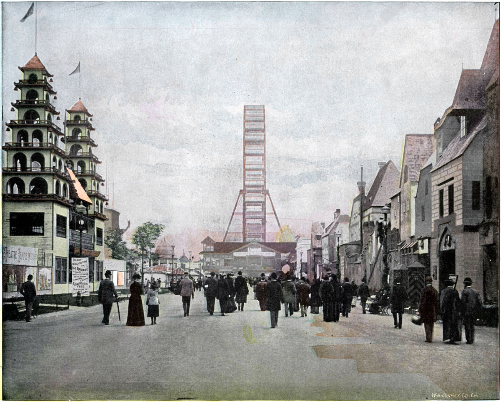
Virtually every carnival and fair and circus in America since 1893 has featured a small replica of the Columbian Exposition’s “Midway.” Each is still called a Midway, after the Midway Plaisance.
And the centerpiece of almost all of those midways has been and still is the Ferris Wheel. (Permanent Amusement Parks like Six Flags tend to center more around monster roller coasters, but those are not possible in the temporary setting of the fair and carnival midway.) You can see the "original Ferris Wheel" in the picture above.
Just about everyone knows what a Ferris Wheel is, but few seem to have any idea … why “Ferris”?
The answer to that is the fact that the giant Wheel you see in pictures of the Columbian Exposition was designed by George Washington Ferris. There had been primitive versions of an “observation wheel” prior to that, some even going back to the 1600s, but they were all made of wood, and relatively small.
The directors of the Columbian Exposition were very consciously attempting to create an environment to “vie with” the grandeur of the famous 1889 International Exposition in Paris that had recently been held. That wasn’t going to be easy to do, as you can see from this illustration of the interior of one of the pavilions at that Paris event.
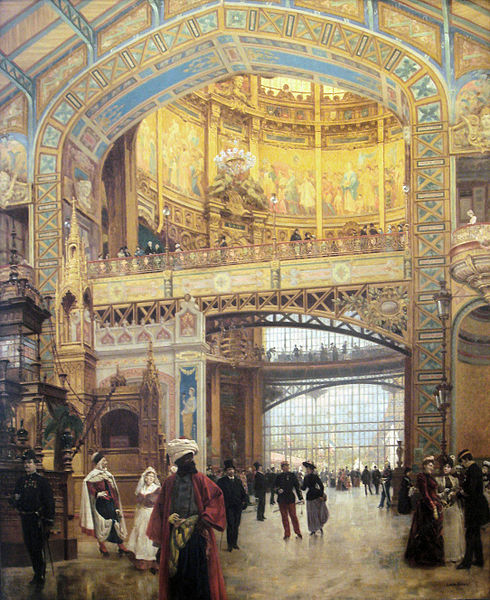
But they were pretty confident that all the gigantic, ornate buildings of the White City would be quite comparable, and the size and beauty of the grounds, number of elegant secondary buildings, and complexity and sheer massive amount of exhibitions would dwarf the Paris event. What they couldn’t decide, early on, was what sort of major “icon” to include that would give the same kind of focus to their efforts that the brand new Eiffel Tower gave to the Paris event. As the tallest man-
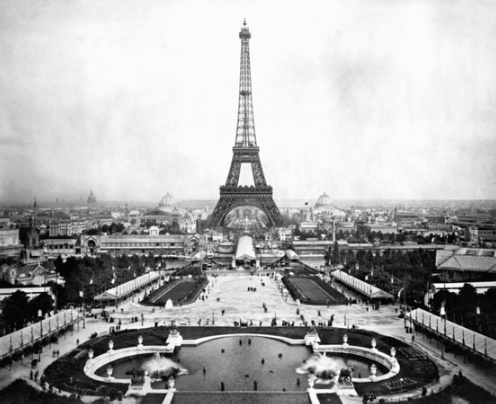
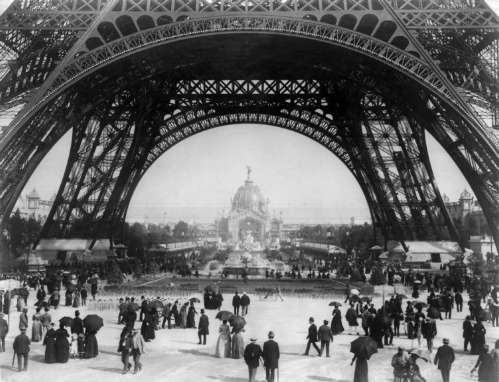
After gathering proposals from a variety of architects, they finally settled on the offer by Ferris to create a gigantic structure that would double as a “ride.” But it was going to be a ride like none before …and not rivaled until recent decades. The Ferris Wheels at midways in my childhood always had open, basket-
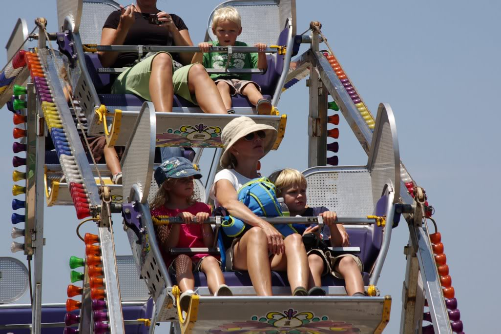
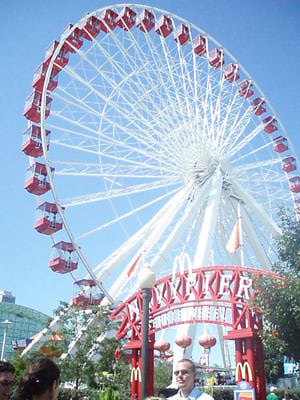
I’m betting that’s what most people think of when they hear the term “ferris wheel.” But these don’t hold a candle to the “original Ferris Wheel.”
It was 264 feet tall (comparable to a 20-
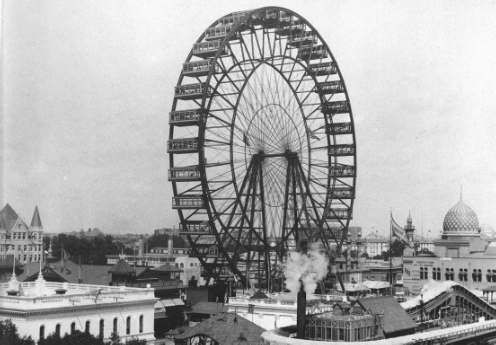
On June 9, 1893, the wheel was primed for a test run with great anticipation and no little anxiety. The engine that would activate the wheel was fueled by steam boilers whose underground mains rushed steam to propel the pistons of its thousand-
… The Ferris Wheel took 20 minutes to make two revolutions, the first involving six stops to allow passengers to exit and enter and the second a nine-
The cars were 24 feet long, 13 feet wide, and 10 feet high, and weighed 26,000 pounds. Each car carried fancy twisted wire chairs for 38 of the 60 passengers. The five large plate glass windows on each side were fitted with heavy screens and the doors at each end were provided with secure locks… firefighting equipment was carried as a safeguard… Six platforms were arranged to speed loading and unloading, with a guard at each to signal the operator when his car was filled and locked. Conductors rode in each car to answer patrons' questions or, if necessary, to calm their fears. [Source]
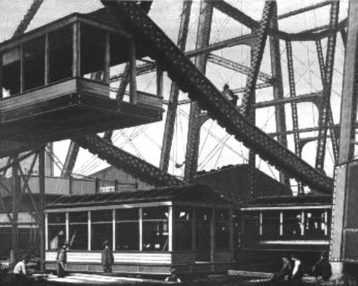
No, it wasn’t quite the Eiffel Tower. But in its own way, Mr. Ferris’s Big Wheel of the Columbian Exposition was iconically appropriate for the 1893 Fair, both as an impressive architectural marvel…and as a symbol of America’s growing fascination with large-
And I’m sure that those who had the opportunity to ride on it found it an experience they’d never forget.
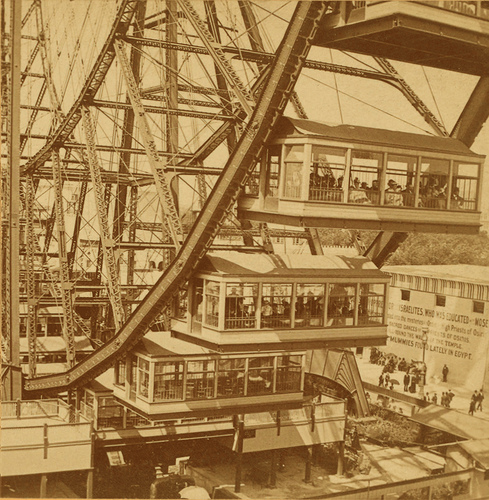
P.S. The Wheel was disassembled at the end of the Fair and reassembled a year later for a permanent amusement park in the same general area. It was featured there from 1895 to 1903. A wrecking company bought it at that point, dismantled it, and transported it by train to the site of the St. Louis World’s Fair in 1904. After its gig there, it was destroyed by a controlled dynamite demolition May 11, 1906.
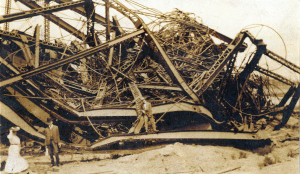
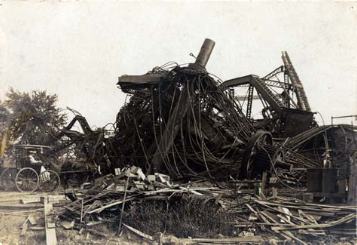
Although the Ferris Wheel was the largest (pun intended) long-